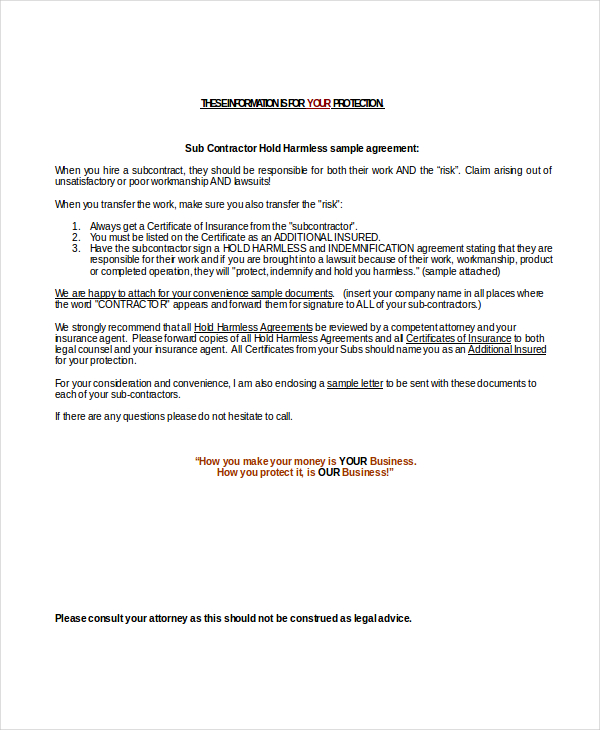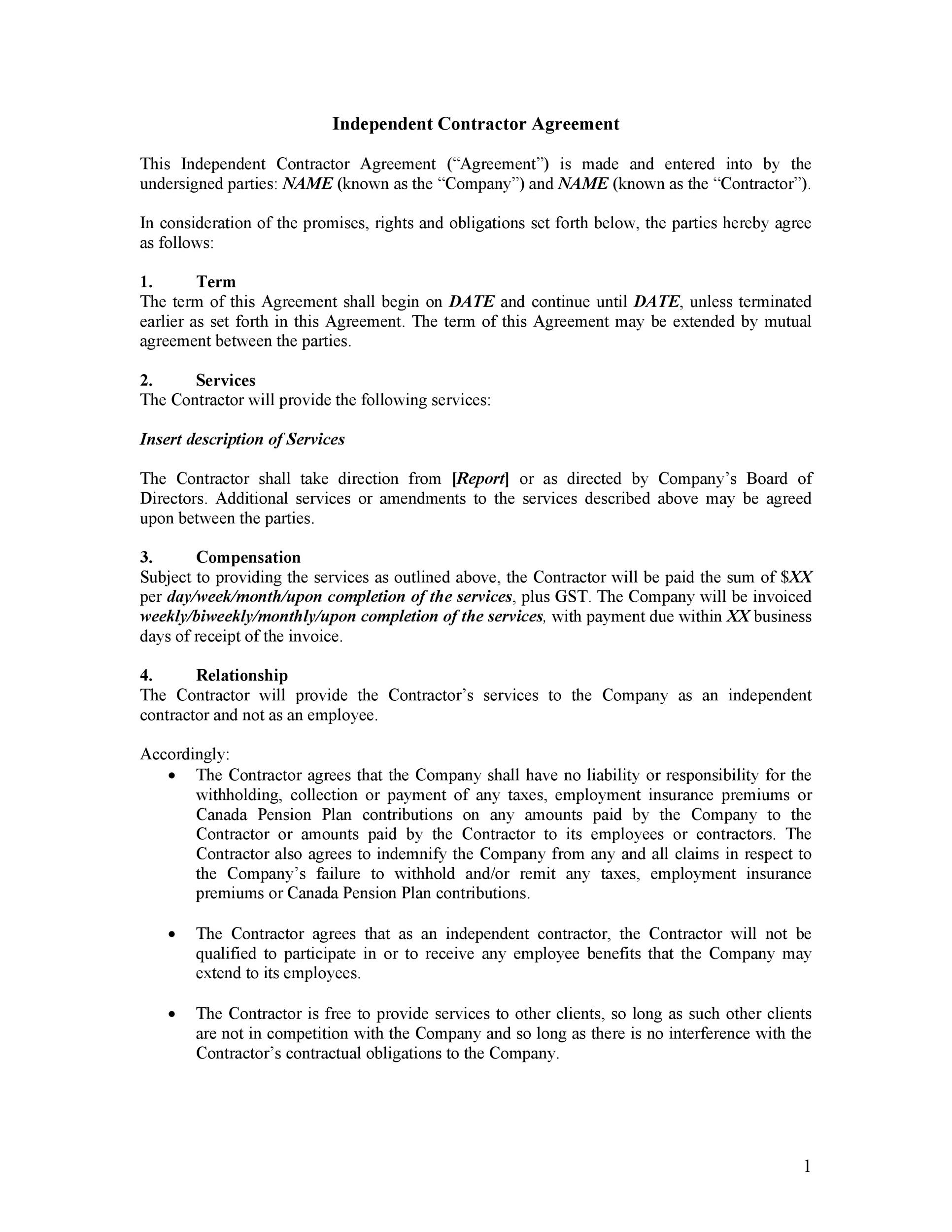
A properly worded indemnification clause is critical to reducing risk in a construction contract. Indemnification Clause. An indemnification clause may include any, or all, of three distinct obligations , including to (1) indemnify, (2) defend , and ( 3) hold harmless the client. An indemnity agreement reduces your construction risks and could be a factor in controlling your total legal expenses.
It is essential that the agreement itself describes the types of losses being covere including legal fees. Some states do not favor indemnity agreements and present limitations to indemnity clauses in construction contracts. What is indemnity clause in construction contracts? Can subcontractor rely on indemnity clause?
What are the types of indemnity clauses? The event might lead to special risk or exposure that justifies special attention. The extent of the risk might be unknown, and not even be capped by an exclusion of liability in the contract. These provisions require one party to assume responsibility for third party claims made against the other party, and they’re very commonly used in construction contracts.

In fact, indemnification clauses are a major player in the ever-waging war over managing risk. Often, indemnity clauses are qualified by an exclusion clause. A subcontractor finding itself in on the receiving end of a claim by the contractor may seek to rely on such an exclusion to reduce its liability. Given the nature of indemnity clauses, it may be the only protection from full liability available to the indemnifying party.
This includes a limited indemnity clause, intermediate indemnity , and a broad indemnity. The most important part of an indemnification clause is that it protects the indemnified party from lawsuits filed by third parties. This Risk Note addresses the indemnification clause while another risk note addresses insurance clauses and sample wordings.
An indemnity clause in a contract allocates risk for claims or for loss or damage between the parties to the contract, so that if one party suffers a loss, the other party will reimburse them. SAMPLE CONTRACT CLAUSE Consultant agrees, to the extent permitted by law, to indemnify and hold harmless but shall have no obligation to defend the Client and its officers, directors and employees (collectively “Client”) from and against liability for damages to the extent actually caused by the negligent acts, errors or omissions of Consultant and its subconsultants, or anyone for whom the Consultant is legally liable, in the performance of professional services under this Agreement. If the hotel loses profits of say $million over those two months, the owner could look to recover those losses from the head contractor under the indemnity clause in the head contract. The head contractor could then turn to the subcontractor to recover the same under the indemnity clause in the subcontract. This sample printable agreement form is a sample of an indemnification bond between a food serving agency and an institution.
The clauses are project-specific but the format is strictly business associated. This language is included in cases where there is a possibility of loss or damage to one party during the term of, or arising from the circumstances of, the contract. When an indemnification clause is inserted into a contract, it is meant to transfer risk between the contracted parties. In most cases, these clauses are used to make sure that a potential loss will be compensated.
If you are the party covered by this clause , it means that the other contractual party is promising to compensate you if their actions cause you to suffer a loss. In the event any provision of this Agreement shall be held invalid or unenforceable by any court of competent jurisdiction, such holding shall not invalidate or render unenforceable any other provision hereof. Hold Harmless Clause.
The indemnification clause usually includes the hold harmless clause. SAMPLE ONLY: this may not be appropriate for some contracts and should be customized. The foregoing defen hold harmless and indemnity obligations of this paragraph shall apply solely to any such causes of action, damages, costs, expenses or defense obligations covered by Consultant’s Insurance specified in this Agreement. Sample 6: Instead of agreeing to indemnify for all damages, including reasonable attorneys fees, strike out the attorneys fees in the body of the indemnity clause and use the simple one sentence shown in the above examples for attorneys fees or use the. Even after reading this post, you will still want to consult a lawyer, but you will be more aware of what to pay attention to when it comes to the indemnification clause.

Reasonable indemnification clauses will state that the clause only applies if Company A commits an act of negligence or willful misconduct, including breach of contract. A sample indemnity clause might state: The Board of Directors, officers, employees and agents of the Corporation will be indemnified and held harmless by the Corporation and its shareholders against any claim. Contractor shall perform the Services in compliance with all applicable federal, state, and local laws and regulations. Contractor acknowledges and agrees that the Services shall be provided as an independent contractor. Commercial contracts typically include an indemnity clause among other standard terms (also known as boilerplate clauses).
Words such as “hold harmless”, “defend”, “make good” or “compensate” often indicate the clause is, in effect, an indemnity clause. Strive for the broadest indemnity appropriate under the circumstances.
No comments:
Post a Comment
Note: only a member of this blog may post a comment.